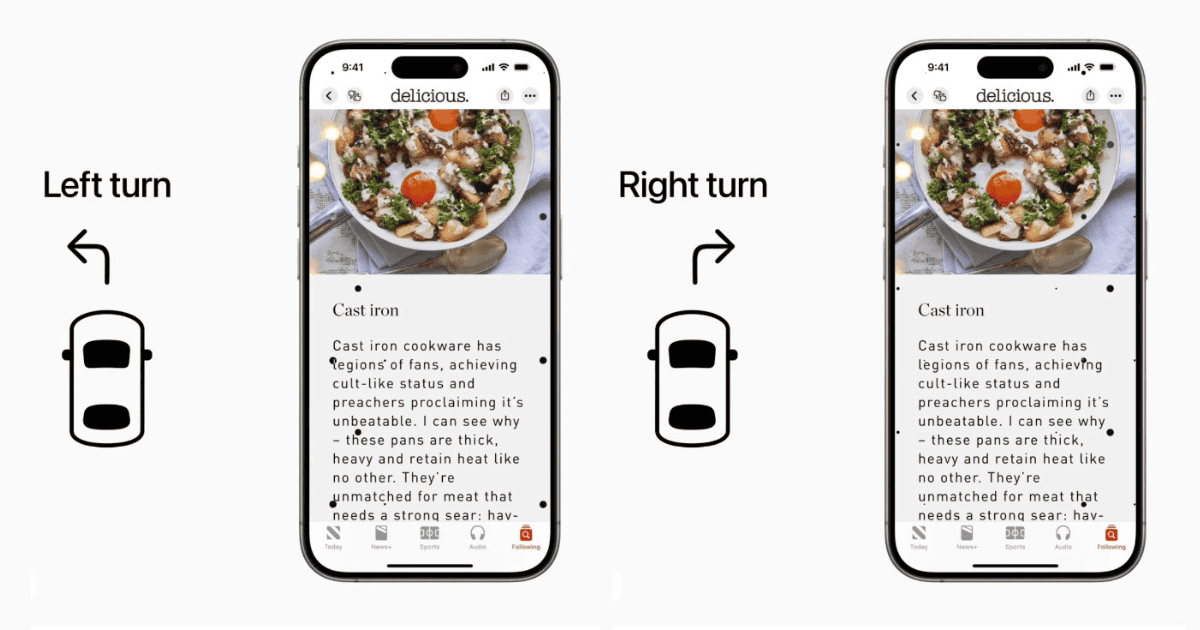Apple unveiled a new accessibility feature called “Vehicle Motion Cues,” specifically made to combat motion sickness for passengers on the go.
It even happens to you when you’re traveling in a car, reading MacObserver’s latest news posts, but as you try to concentrate, you’re hit with a wave of nausea because the vehicle is either too shaky or there are just too many turns. This new feature can address the sensory mismatch that often triggers nausea, which will allow users to enjoy their iPhones and iPads while in moving vehicles comfortably.
Here is how it works: Vehicle Motion Cues uses built-in sensors to detect when your device is in a moving car, bus, or other vehicle.
Once motion is detected, animated dots appear on the edges of the screen. These dots shift and change in response to the vehicle’s movements, what it is doing is it is providng a visual reference that aligns with the physical sensations you’re experiencing. So if the vehicle turns left, your body will naturally move to right side, and so will be the dots on the screen, matching the momentum to yours.
By providing a visual cue that matches the physical movement, Vehicle Motion Cues can reduce the sensory conflict that often leads to motion sickness. The animated dots are designed to be unobtrusive.
You can choose to have Vehicle Motion Cues activate automatically whenever motion is detected, or you can manually enable/disable it through the Control Center.
Not just this, Apple also revealed several other features like Eye Tracker for iPhones and iPads, which will let you use your devices without touching them or even moving your hands at all; as the saying goes, it’s all in the eyes.
There is also
- Music haptics: Designed for users who are deaf or hard of hearing, this feature uses the Taptic Engine in iPhones to translate music into vibrations.
- Vocal shortcuts: Users can create custom voice commands to trigger specific actions on their devices.
This innovative feature is expected to be available later this year as part of iOS 18.
More here.
